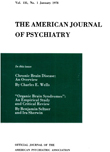Abstract
1. The process of inducing hypnosis and the fully developed hypnotic state are a continuum which can be studied satisfactorily only in the novice, and which under such circumstances consists of three stages which shade from one into the next.
2. In the initiation of the process there is a progressive elimination of all channels of sensori-motor communication between the subject and the outside world, with the exception of the channels of communication between the subject and the hypnotist. As a consequence, during this phase the hypnotist becomes temporarily the sole representative of and contact with the outside world.
3. In this essential characteristic, the induction phase parallels the sensori-motor relationships of the infant to the outside world during the earliest phase of infancy, during which the parents play in the psychology of the infant a rôle almost identical to that of the hypnotist in the mental life of the subject.
4. The onset of the hypnotic state consists of a partial sleep in which active sensorimotor channels are restricted to those between the subject and the hypnotist.
5. This reduction of sensori-motor channels obliterates the Ego boundaries of the subject and constricts them, which makes inevitable a psychological fusion between hypnotist and subject.
6. This constitutes the second phase in the process, one in which a fusion of subject and hypnotist is achieved, with the result that to the subject the words of the hypnotist become indistinguishable from his own thoughts. It is this in turn which makes possible all of the phenomena of apparent passive suggestibility.
7. At the same time, this same restriction of sensori-motor relationships induces and makes possible states of hypnagogic revery in which vivid sensory memories and images are released. These images and memories include olfactory, gustatory, tactile, and kinæsthetic modalities of sensation which are not ordinarily easily recalled or vividly imagined.
8. The sensory vividness of these reveries in turn opens the way to buried memories, and particularly to the buried affects which are related to such sensory memories.
9. Physiologically the hypnotic process is shown to be an extension of the processes of normal attention, the result of the creation in the central nervous system of a concentrated focus of excitation with the surrounding areas of inhibition (in the descriptive Pavlovian sense).
10. In turn, this is dependent physiologically upon:
(a) Relative immobilization through the immobilization of the head or eye.
(b) The influence of monotony.
11. Initiation of monotony depends upon sensory adaptation, which in turn is in part dependent upon rhythm.
12. Psychologically the creation of the hypnotic state, with its focus of excitation within limited areas, depends upon a diminution of alertness through allaying anxiety and other defenses, a process which is a necessary prerequisite to the suppression of sensory warning signals.
13. The shift to the fully developed final phase of the hypnotic state involves:
(a) A partial re-expansion of ego boundaries.
(b) An incorporation of a fragmentary image of the hypnotist within the expanded boundaries of the subject's Ego.
14. In this final phase the compliance of the subject to the hypnotist's commands is again more apparent than real, in that the incorporated image of the hypnotist which echoes the hypnotist's voice has for the time being become a part of the subject's temporary Ego.
15. It is obvious that the final phase in the hypnotic process, which occurs with the full development of the hypnotic state, parallels precisely that phase in the development of the infant's Ego in which its boundaries gradually expand, with the retention of parental images as unconscious incorporated components of the developing Ego of the infant. The incorporated image of the hypnotist plays the same rôle in the hypnotic subject as does the incorporated and unconscious image of the parental figure in the child or adult. Hypnosis thus is seen to be an experimental reproduction of a natural developmental process.
16. The use of hypnosis in some form may conceivably be necessary, therefore, for the complete therapeutic displacement of disturbing superego figures which are retained out of childhood.
17. In the hypnotic process mechanisms are at work identical with those seen in the dream (such as transference, displacement, condensation, etc.). Much has been made of these in the literature; but they are not the essence either of the process or of the state itself.

